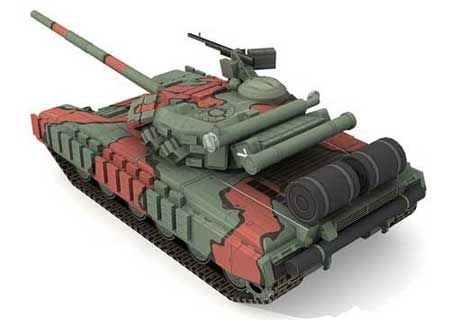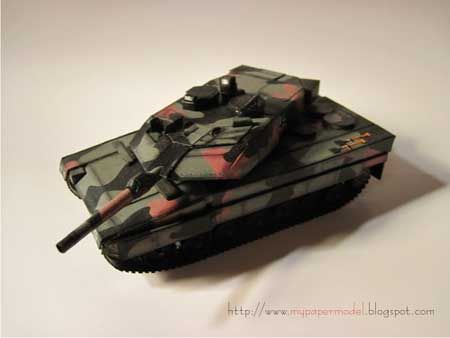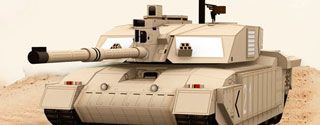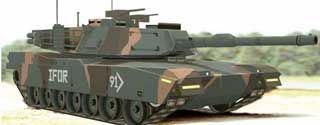I served in the US Army from 1987 to 1995 and built this model while stationed at Ft. Steward, GA in 1989. I read an article in a military themed magazine the speculated on the Future Soviet Tank (FST). The FST was to be “turret less”; with the crew residing in the hull for maximum protection. The article didn’t show any drawings, so I designed a 1/35-scale representation of the FST based on my own ideas at the time.
I don’t remember what inspired me to use card stock for the major body material. I think it was necessity, due to my confined setting and lack of resources. I remember being “embarrassed” for using cheap card stock and not sheet styrene. Little did I know back then that card modeling was a hobby of its own.
I started with a Tamiya 1/35 T-62 kit. The road wheels came from a Tamiya 1/35 M-60. Card stock was used to clad the hull of the T-62 into the shape of my FST. The turret was constructed around the gun housing of the M-60 and the barrel is a plastic drinking straw from a fast food restaurant. Miscellaneous detail parts came from my scrap box (a Panzer IV, M2 Bradley). Parts from a 1/72 ESCI M-113 provided body trim and the ammunition track for the top machine gun. The reactive armor is made from balsa wood and the smoke canister dischargers are made from paper Q-tip rods. Masking tape was used to detail the barrel and some of the body lines. This is a true multi-media model.
I still have the model, but it was dismantled years ago in an attempt to “upgrade” the design. I did find and scan an old photograph of the tank to illustrate what was my first foray into card modeling. The red highlights in the second photo indicated the paper parts.
I was so satisfied with my card modeling experience, that I embarked on an ambitious project to scratch build a Chinese Type 63 APC that was used by the Iraqi Army. I designed the model based on scant info from books and photos – remember there was no public internet back then. I finished the hull and started with the road wheels, but couldn’t get an accurate enough result. I scrapped the project out of frustration and abandoned any attempt to model in paper. It wasn’t until a few years ago that I discovered card modeling was a hobby of its own. Had the internet existed back in 1989, I would have found support and inspiration in card modeling forums. I’m sure I would have continued with the card modeling medium as a substitute for plastic modeling.

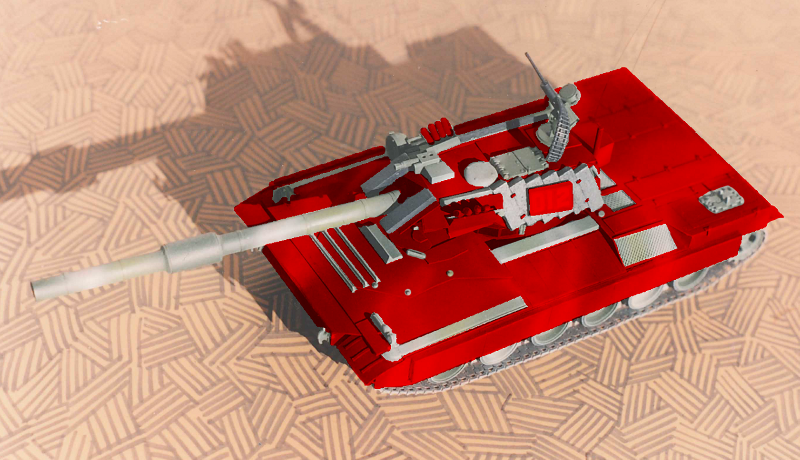
I don’t remember what inspired me to use card stock for the major body material. I think it was necessity, due to my confined setting and lack of resources. I remember being “embarrassed” for using cheap card stock and not sheet styrene. Little did I know back then that card modeling was a hobby of its own.
I started with a Tamiya 1/35 T-62 kit. The road wheels came from a Tamiya 1/35 M-60. Card stock was used to clad the hull of the T-62 into the shape of my FST. The turret was constructed around the gun housing of the M-60 and the barrel is a plastic drinking straw from a fast food restaurant. Miscellaneous detail parts came from my scrap box (a Panzer IV, M2 Bradley). Parts from a 1/72 ESCI M-113 provided body trim and the ammunition track for the top machine gun. The reactive armor is made from balsa wood and the smoke canister dischargers are made from paper Q-tip rods. Masking tape was used to detail the barrel and some of the body lines. This is a true multi-media model.
I still have the model, but it was dismantled years ago in an attempt to “upgrade” the design. I did find and scan an old photograph of the tank to illustrate what was my first foray into card modeling. The red highlights in the second photo indicated the paper parts.
I was so satisfied with my card modeling experience, that I embarked on an ambitious project to scratch build a Chinese Type 63 APC that was used by the Iraqi Army. I designed the model based on scant info from books and photos – remember there was no public internet back then. I finished the hull and started with the road wheels, but couldn’t get an accurate enough result. I scrapped the project out of frustration and abandoned any attempt to model in paper. It wasn’t until a few years ago that I discovered card modeling was a hobby of its own. Had the internet existed back in 1989, I would have found support and inspiration in card modeling forums. I’m sure I would have continued with the card modeling medium as a substitute for plastic modeling.




